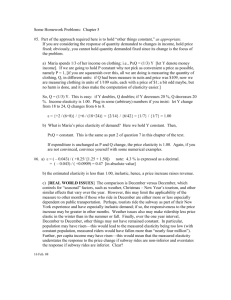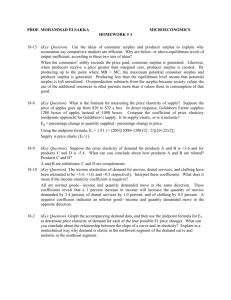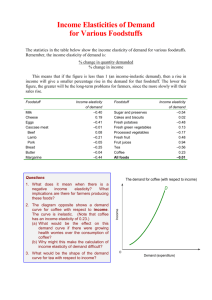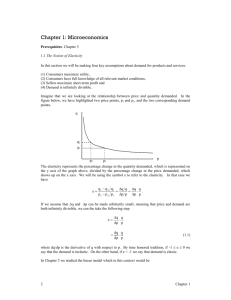elaswkst1 - Harper College
advertisement
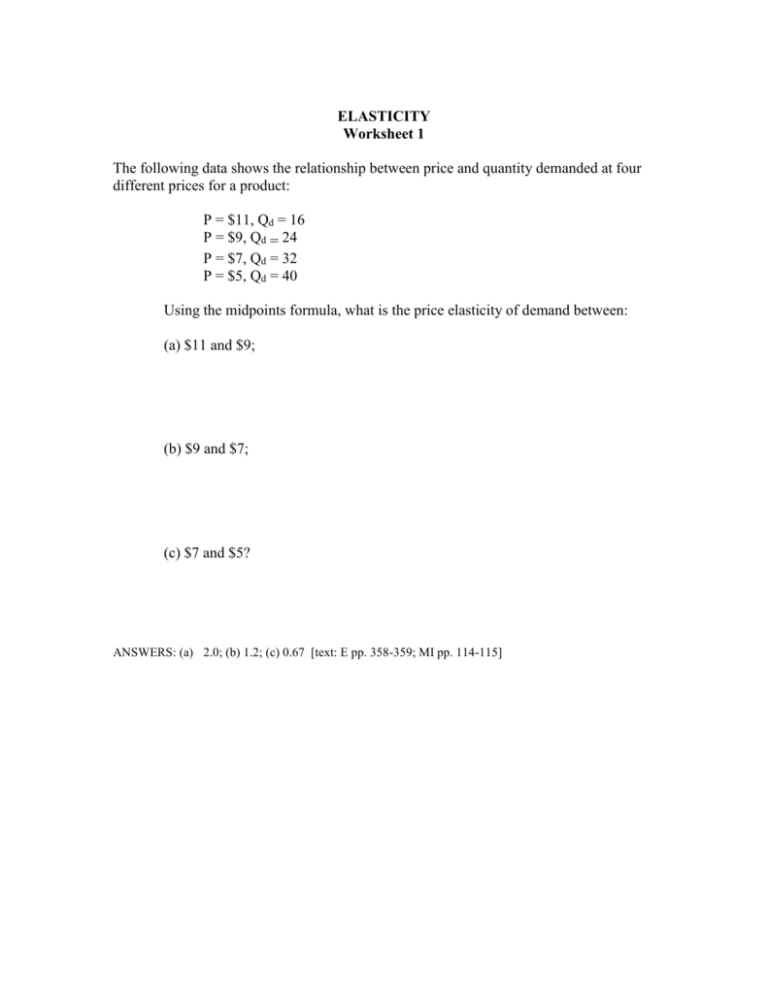
ELASTICITY Worksheet 1 The following data shows the relationship between price and quantity demanded at four different prices for a product: P = $11, Qd = 16 P = $9, Qd = 24 P = $7, Qd = 32 P = $5, Qd = 40 Using the midpoints formula, what is the price elasticity of demand between: (a) $11 and $9; (b) $9 and $7; (c) $7 and $5? ANSWERS: (a) 2.0; (b) 1.2; (c) 0.67 [text: E pp. 358-359; MI pp. 114-115] The following is a straight-line demand curve that confronts a single firm. Quantity TR Ed Price demanded (3) (4) $6 5 4 3 2 1 1 2 3 4 5 6 _____ _____ _____ _____ _____ _____ _____ _____ _____ _____ _____ _____ (a) In column 3, compute total revenue. In column 4, compute the coefficient for the price elasticity of demand at each price using the midpoints formula. (b) Describe the character of elasticity across the prices based on the total revenue test and the elasticity coefficient. (c)Does a straight-line demand curve have constant elasticity? (d) Of what practical significance is your answer to (c)? ANSWERS Price $6 Quantity demanded 1 (3) $6 (4) 3.7 5 2 10 4 3 12 3 4 12 2 5 10 1 6 6 1.8 1.0 0.6 0.3 (a) See the above table for the answers. (b) Total revenue declines when price drops from $3 to $2, and the elasticity coefficient also becomes less than 1 at that price change. Demand is elastic in the range of prices between $6 and $4, and inelastic below $3. A drop in price from $4 to $3 illustrates unitary elasticity. (c) The clear answer is “no” based on the answers in the table. Although the slope of a linear demand curve is, by definition, constant, elasticity varies because it measures percentage changes. (d) The significance is twofold. (1) One cannot tell elasticity by looking at a demand curve because the elasticity changes over the range of the curve. (2) The elasticity of demand for any product will depend on the level of its initial price and quantity, not just on the change in price. Therefore, the demand for a product may be very elastic in one price range (generally the higher price ranges) and very inelastic in another (lower) price range. [text: E pp. 358-361; MI pp. 114-117]


